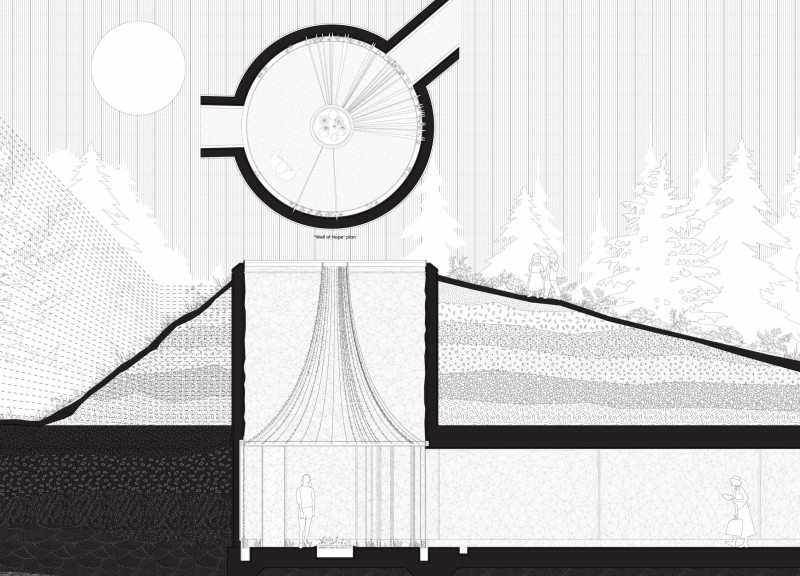5 key facts about this project
The Well of Hope is a memorial designed to encourage contemplation and reflection on historical atrocities, especially those associated with genocides worldwide. Located in a thoughtfully chosen environment, the structure seeks to engage individuals with the profound weight of memory. The design revolves around three main elements: Ground Zero, the Cylinder of Solitude, and the Vectors of Pain. Together, they create a space that balances personal experience with collective remembrance.
Ground Zero serves as the heart of the memorial, acting as a central point from which various vectors extend towards significant genocide sites. This layout highlights the site’s purpose, emphasizing both remembrance and a sense of responsibility. Visitors can use this focal point to navigate their thoughts, understanding the historical significance of the events being commemorated.
The Cylinder of Solitude is designed as a private space for personal reflection. It allows individuals to connect with their thoughts and feelings regarding the tragedies represented throughout the memorial. This area serves as a sanctuary, encouraging quiet contemplation amidst the larger narrative of collective memory. It becomes a place where visitors can sit with their emotions and process the stories of loss and suffering that the memorial holds.
The Vectors of Pain are another key component of the design. They represent paths leading from Ground Zero to various locations tied to genocide. These paths are visually expressed in the memorial's flooring as water lines that rise vertically, creating a clear visual connection between the memorial and the historical sites. Climbing plants are integrated into these vertical spaces, symbolizing resilience and growth that can emerge from deep suffering, connecting nature with the theme of remembrance.
The overall arrangement of space and landscaping elements provides visitors with a rich experience. The combination of water features and plant life enhances the memorial’s aesthetic while reinforcing its narrative. This living context invites reflection on both loss and hope, allowing individuals to engage deeply with the stories memorialized within its structure.























































